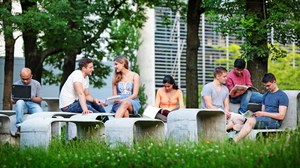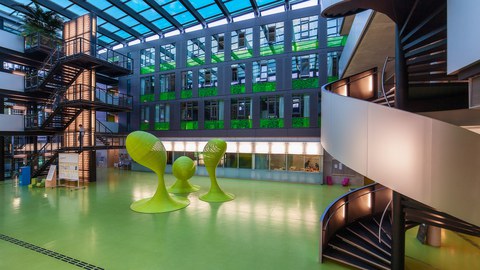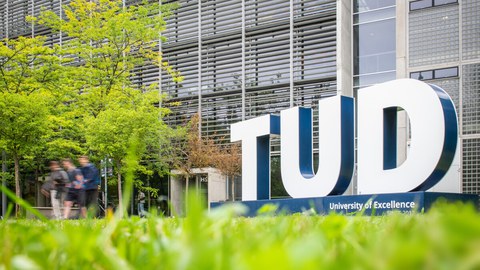Studying at the Chair
The main objective of our chair is to teach not only expertise in the field, but also practical competence. This is why we leave room for "active learning" in all of our courses.
 © Amac Garbe
© Amac Garbe
Information on Teaching
Active Learning
Through "active learning", they gain not only the necessary expertise, but also, through active participation, they acquire and improve social and personal, as well as interdisciplinary methodical competencies ("soft skills"). In this context, we use the word "acquire" instead of "learn", since these so called key qualifications, in contrast to professional expertise, can not be taught. This means that we offer all the prerequisites in our courses, but the students determine their learning success with their personal engagement. As a result, with their acquired practical competencies, the students determine their ability to improve themselves lifelong through learning. They decide for themselves to remain capable of action for their whole lives.
In order to make room for "active learning", we decided to replace the classical lecture format and instead offer different types of seminars to integrate methods of "active learning" in every seminar. Students take part in our courses by performing interviews, presentations, debates, case studies, business games, project work, and problem oriented learning, just to name a few.
Content
Within our courses we invite students to discuss the following questions together with us:
- Which framework conditions are relevant for companies and how do they interact when combined?
- In what ways do these framework conditions influence ecological decision-making?
- In what way is it possible to integrate environmental protection in all stages of the value circle?
- Which problems can occur in this context and how can they possibly be solved?
- Which instruments for the integration of an ecological orientation are available?
- Where do the strengths and weaknesses of these instruments lie?
Students analyse all these questions in a team by looking at practical examples. These can be private companies, non-profit-organizations (e.g. the Red Cross or educational institutions), or units of public administration (e.g. the city administration of Dresden). With these different examples from practice, students also gain a sense of the wide range of possible uses of Business Administration.




